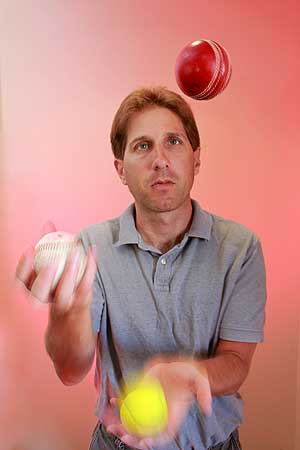Understanding the outfield catch

Whether it’s softball, baseball or cricket, fielding in the deep on a sunny day might seem like the easiest part of the game – easy that is, until the ball comes rocketing off the bat and heading your way. ??Experienced professionals tend to make catching a high ball look simple, but how do they do it? What visual information is used to guide fielders to the right place at the right time to catch the ball? Scientists have debated this “outfielder problem” for some time.
Now, researchers have worked out the process the human brain goes through. And it is not, as often previously thought, a case of instantly mapping the likely trajectory and running to the anticipated landing spot.
Dr Philip Fink from Massey’s Institute of Food, Nutrition and Human Health worked with American researchers Professor William Warren of Brown University in Rhode Island and Assistant Professor Patrick Foo from the University of North Carolina in Asheville, in a specialised virtual reality laboratory. Their findings were published in the online Journal of Vision.
The team used virtual reality as a tool to manipulate trajectories of fly balls, while recording the catchers’ movements as they caught the virtual fly balls. Fielders were able to move freely in a 12m by 12m space while being sent visual information through a head mounted display.
“One of the traditional theories is the a catcher will quickly form a sort of map in their mind to predict where the ball will land and then run to the spot to catch it,” Dr Fink says. “However, our research backed an alternative theory, optical acceleration cancellation. In that theory, the catcher continuously tracks the ball’s visual velocity. If it increases, they run backwards and, if it decreases, they run forward to make the catch.”
Being able to use the simulator to make the ball fly on a physically impossible trajectory was key to proving the theory, Dr Fink says.
“We were able to demonstrate that the catcher constantly watched the ball and continuously updated their movements to catch it. It was not just a case of seeing the ball early and then running to where it was going to land.”
The research would help in teaching people how to catch better, and also carries implications for other daily tasks that involve visual control, he says.